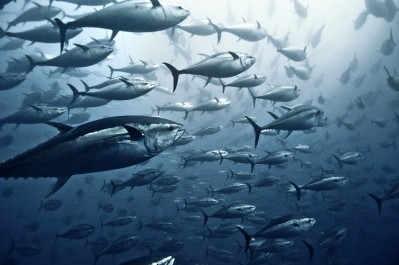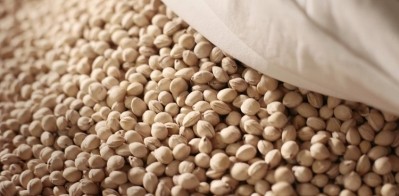Upcycling shrimp waste to make ‘tasteful alternative’ to food flavourings

Shrimp is considered one of the most commonly consumed types of seafood, and demand is not predicted to subside. ResearchAndMarkets valued the global shrimp market at $18.3bn in 2020 and expects it to increase to $23.4bn by 2026.
The production of peeled shrimp generates significant amounts of side streams, including shrimp shells, heads, and cooking water. Traditionally, however, these side streams have been either processed into animal feed or discarded.
Given the nutritional value of some of these would-be waste products, which are rich in calcium, collagen, and flavours, researchers in Denmark have sought to develop a profitable and sustainable way to extract these substances for industry.
Extracting multiple substances
It is not the first time researchers have investigated alternative uses for shrimp waste, but so far, extraction of just one substance has not proved profitable.
In a new project titled ReMeSS, headed up by the Technical University of Denmark’s (DTU) National Food Institute, researchers aim to develop an ‘economically sustainable’ process that can extract several substances.
According to project manager and Associate Professor at the National Food Institute, Nina Gringer, the strength of the project lies in the fact that ‘players from the entire value chain’ are involved. “Thus, we have all the necessary competencies to create a profitable extraction process.
“We aim to extract value from the side streams that until now have only had little value or been an expense for the industry, while also making the production of peeled shrimp more sustainable.”
Products for food and health industries
The researchers are using a compact filter press, developed at DTU, to kickstart the upcycling process.
“The cooked and peeled shrimps are separated into a liquid and dry matter,” Gringer told this publication. “The liquid will be upcycled into flavour products, and the shrimp head and shell fraction will be further processed into a calcium-rich fraction ready as a health food supplement.”
The collagen-rich fraction can likewise be used as a health food product, the project manager elaborated. “Further extraction might provide fractions rich in proteins/peptides, with techno-functional properties such as stabilisers in emulsions.”
The overall goal is to extract as many high-value substances as possible for use as ingredients in both food and health care products. And thanks to DTU’s compact filter press and ‘gentle extraction technologies’, project partners will be able to extract as many products as possible while generating the least amount of residual product possible, noted the researchers.

Concerning allergen risk, Gringer said there will always be a potential risk of allergens in products stemming from shrimps, however some of the techniques applied in ReMeSS’ process could ‘reduce or eliminate’ the risk. “All products will be marked with a notifying label according to Danish legislation,” she stressed.
Who stands to gain?
From a financial perspective, industry stands to gain. “The shrimp peeling industry and the rest of the value chain will gain from the project, as their shrimp side streams will be more valuable and each process step introduces more value to the project,” explained Gringer.
However, benefits are not purely financial and environmental. According to researchers, the body can more easily obtain calcium from supplements if it comes from an organic source, such as shrimp cells, compared to inorganic calcium from, for example, a limestone quarry.
“Overall, society will benefit from having a new, sustainable process that turns shrimp side streams into products for the food and health sector,” said the project lead. “The consumer will also gain value in that they will have a new marine alternative to collagen and a new organic alternative to inorganic calcium.
“In addition, the new flavour product will serve as a tasteful alternative to existing products in this fast-growing product category.”



























